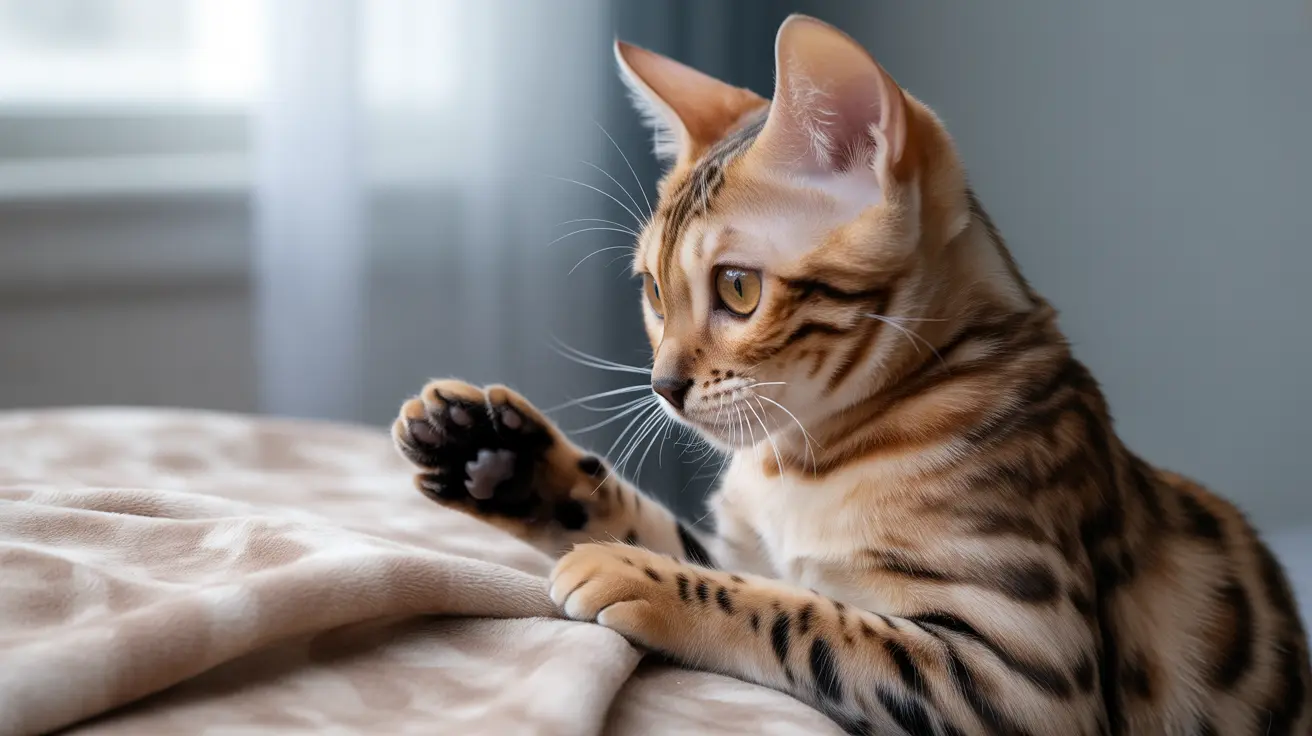Cat paws are remarkable feats of evolutionary engineering that enable our feline friends to perform incredible athletic feats while moving with signature grace and stealth. From their cushioned paw pads to their retractable claws, every component serves a vital purpose in a cat's daily life.
In this comprehensive guide, we'll explore the fascinating anatomy of cat paws, including their structure, function, and the amazing adaptations that make cats such agile and capable creatures.
The Essential Components of Cat Paw Anatomy
A cat's paw consists of several specialized structures working in harmony. The most visible features are the iconic "toe beans" - the soft, cushioned paw pads that protect your cat's feet and enable silent movement.
- Digital pads under each toe
- A large central pad (metacarpal in front paws, metatarsal in back paws)
- A carpal pad on the inner front legs
- Sometimes a dewclaw pad on front paws
The Remarkable Structure of Paw Pads
Cat paw pads are composed of three distinct layers:
- A tough outer epidermis for protection
- A flexible dermis rich in collagen and elastic fibers
- A shock-absorbing subcutaneous layer filled with fatty tissue
This specialized structure allows cats to land safely from impressive heights and move silently during hunting or play.
The Power of Retractable Claws
Unlike dogs, cats possess fully retractable claws that extend and withdraw as needed. These sharp tools grow directly from the last bone of each toe, providing:
- Enhanced climbing ability
- Improved hunting efficiency
- Better traction on various surfaces
- Self-defense capabilities
Sensory Capabilities and Communication
Cat paw pads are highly sensitive organs packed with nerve endings that allow cats to:
- Detect subtle vibrations
- Assess surface temperature and texture
- Navigate precisely in low-light conditions
- Sense potential prey movement
Additionally, scent glands in the paw pads enable cats to mark territory and communicate with other felines through scratching and kneading behaviors.
Maintaining Healthy Paw Pads
While cat paw pads are naturally tough and resilient, they require proper care to stay healthy. Regular inspection can help identify:
- Cuts or abrasions
- Burns from hot surfaces
- Signs of infection
- Embedded foreign objects
Indoor cats may develop more sensitive paw pads, while outdoor cats might need extra attention due to exposure to various environmental hazards.
Frequently Asked Questions
What are the main components of a cat's paw and how do they contribute to its function?
A cat's paw includes digital pads, a central pad, retractable claws, bones, muscles, and nerves. Each component works together to provide balance, shock absorption, sensory input, and precise movement control.
How do cat paw pads protect cats during jumping and running?
The three-layered structure of paw pads, particularly the fatty subcutaneous layer, acts as a natural shock absorber. This design helps distribute impact forces and protect joints when cats jump or run.
Why do cats have retractable claws and how does this affect their movement?
Retractable claws allow cats to keep their claws sharp by protecting them when not in use. This feature also enables silent movement when hunting and provides instant traction when needed for climbing or self-defense.
What is the role of the dewclaw on a cat's front paws?
The dewclaw, located higher on the front legs, helps with gripping and climbing. While it doesn't contact the ground during walking, it's useful for grasping prey and maintaining balance during climbing activities.
How should I care for my cat's paw pads to prevent injury and infection?
Regular inspection, keeping walking surfaces clean, avoiding extreme temperatures, and promptly addressing any cuts or injuries are essential for maintaining healthy paw pads. Consult a veterinarian for any serious injuries or persistent issues.
Conclusion
The intricate anatomy of cat paws demonstrates nature's brilliant design, combining strength, sensitivity, and versatility. Understanding these remarkable structures helps us better care for our feline companions and appreciate their incredible physical capabilities.






